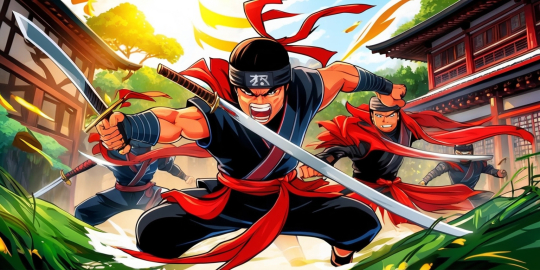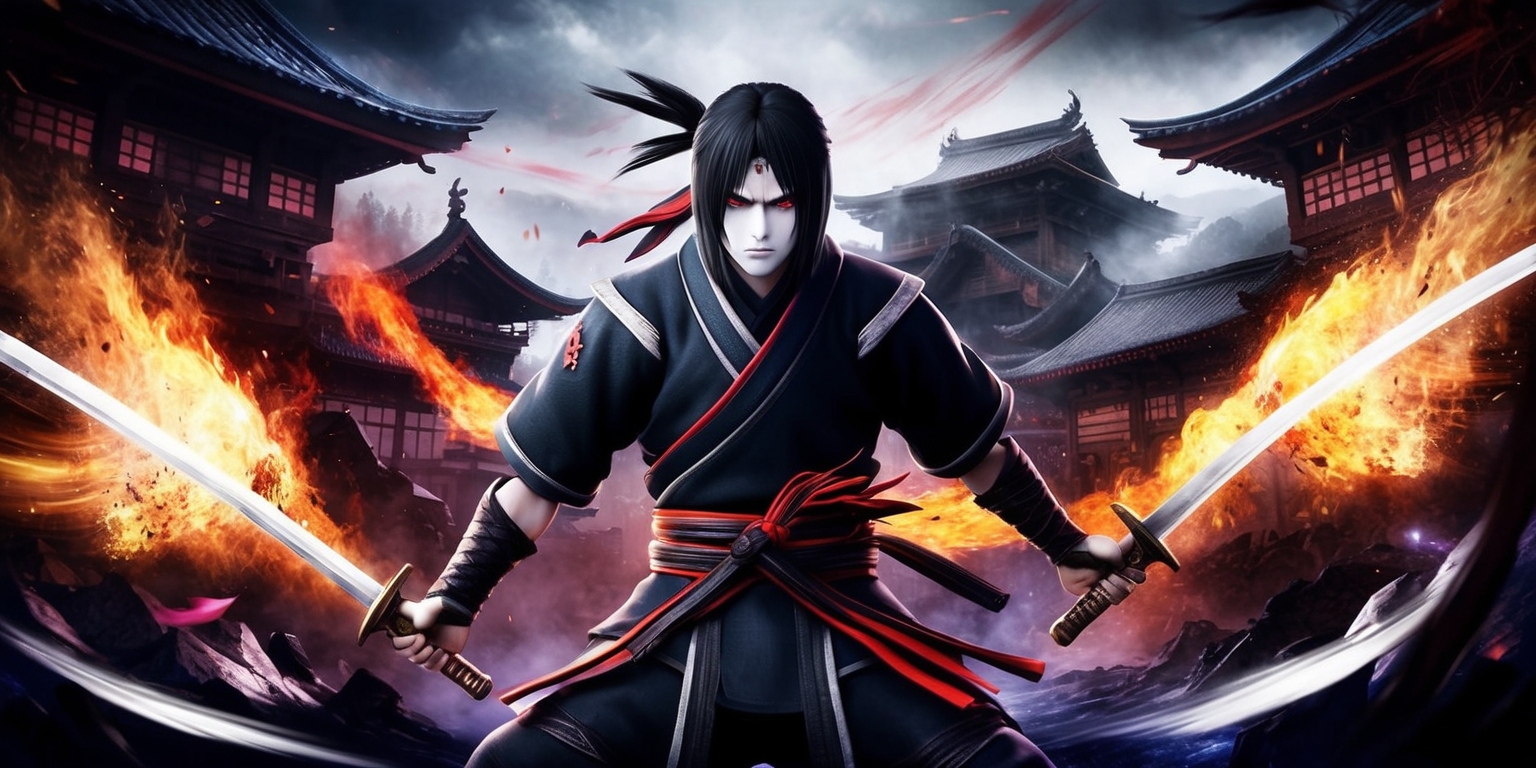
Ninja Gaiden: Ragebound emerges as a dazzling reimagining of a classic saga, blending precise platforming and rapid martial maneuvers in a way that both honors and reinvents the legacy of its predecessors. The game offers a vibrant world where every jump, strike, and counter is infused with kinetic energy. With its carefully crafted mechanics and visually engaging environments, the experience transcends simple nostalgia and creates a playground for modern martial artistry. The innovation lies not only in its faithful nod to retro roots but in its own distinct twists that challenge players in fresh ways while preserving the fluidity that fans have long cherished.
Fluid Dynamics of Combat and Movement
The mechanics in Ragebound are a masterclass in balance between aggression and finesse. In each encounter, players feel an almost rhythmic flow, as every dodge, strike, and agile maneuver is meticulously designed to maintain a continuous sense of motion. The fluidity of combat is evident in the way the protagonist navigates diverse terrains, scaling walls and leaping gracefully between platforms. The precise control afforded by the game allows for an immersive experience where every action seems to contribute to an elegant martial performance. The emphasis on momentum creates a battle rhythm that rewards quick reflexes, making each movement feel organically connected to the next. In essence, every skirmish transforms into a dynamic dance of calculated risk and practiced skill.
Heritage and Revitalization
Ragebound pays homage to its storied antecedents without succumbing to mere imitation. The game draws inspiration from the classic 2D platformers while injecting contemporary sensibilities into its combat system. The narrative arc, featuring a young ninja shouldering the legacy of great martial tradition, resonates with fans eager for innovation coupled with a respectful nod to history. The blend of retro aesthetics with modern design techniques creates environments that are simultaneously nostalgic and novel. The rich heritage informs every Facet of the game, ranging from the creation of characters to the design of levels. Moreover, the developers have judiciously infused the experience with unique twists that elevate the gameplay, making each stage a fresh experience without stripping away the defining qualities that captured the audience's hearts in the original series.
The Art of Aerial Maneuvers
A highlight of Ragebound is the ingenious approach to aerial combat which distinguishes it from earlier iterations. The introduction of the mid-air boost, reminiscent of a dynamic double-jump, provides a fresh layer to the platforming aspect. This move allows players to ascend into the fray with a burst of momentum that can be strategically used to bypass obstacles or engage adversaries from a tactical vantage point. Much like an acrobat performing a daring leap between structures, the seamless execution of airborne techniques demands precision and timing. The ability to remain aloft in mid-battle encourages creative gameplay, where risks translate directly into spectacular rewards. This innovative mechanic evolves the player’s navigational strategy and redefines what it means to engage with the verticality of the game’s intricate design.
Weapon Evolution and Adaptation

The arsenal available to the young ninja expands as the game progresses, blending traditional melee techniques with a selection of unique ranged options. Early on, the emphasis is on close-quarters precision and fluid swordplay, where each slash and parry radiates refined control. As the journey unfolds, players encounter transformative abilities tied to the infusion of an ancient spirit. These abilities unlock a diverse array of offensive options—from throwing sharp daggers to hurling sizeable axes—that add layers to the combat experience. This evolution in weaponry demands both strategic foresight and adaptable reflexes, as each stage introduces novel challenges that test the player’s mastery over different attack modes. Every new weapon unlock enriches the tactical landscape and deepens the immersion in a world where tradition meets innovation.
Tactical Rhythm and Precision
One of the game’s defining elements is a sophisticated system that emphasizes tactical rhythm and precision. In the midst of the chaos, a special attack mechanic allows certain adversaries to be marked with distinctive luminous auras. When these enemies are subdued using the appropriate method, players are rewarded with a temporary surge of power that can decisively end encounters. This system encourages a calculated balance between aggressive action and careful observation. The satisfaction derived from timing each move perfectly transforms battles into sequences that feel like finely choreographed performances. The interplay between methodical planning and spontaneous execution makes every combat encounter engaging and refreshingly unpredictable. Such mechanics serve to enhance the overall intensity and satisfaction of clearing each level with a continuous flow of strategic brilliance.
Design Philosophy and Level Challenges
The level design in Ragebound is a testament to the careful balance between challenge and pacing. Each environment is thoughtfully constructed to test the player’s mastery over the ninja’s fluid repertoire of movements. Verticality and horizontal breadth combine to form intricately layered arenas where strategy and agility are equally rewarded. From compact corridors teeming with minor adversaries to expansive battlegrounds that climax in epic stand-offs, the levels demand both precision and adaptability. The deliberate placement of checkpoints and the forgiving nature of the challenge contrasts with more unforgiving predecessors, inviting players to experiment without the fear of harsh penalties. This design philosophy transforms the progression through each stage into a nuanced exploration of both combat intricacies and spatial strategy, ensuring that every level provides an opportunity to refine one’s ninja prowess.
Crafting a Unique Ninja Experience
At its core, Ragebound distills the essence of what makes the ninja archetype so compelling, crafting a journey that stirs primal emotions while exuding polished elegance. The protagonist, a young and resourceful warrior, embodies the agility and resilience that define the spirit of his craft. Throughout each meticulously designed stage, the game challenges the player to balance aggressive offense with subtle evasive maneuvers. The gameplay mechanics invite experimentation, rewarding the player with newly acquired abilities as they harness the power of an ancient spirit. These transformative moments are interwoven throughout the narrative, making each progression feel like an internal evolution. The result is a rich tapestry of action and story that honors traditional ninja lore while pioneering fresh techniques in modern platforming, ensuring a deep connection between player and character.
The Intensity of Boss Concentrations
Ragebound’s encounters with formidable adversaries are structured to escalate the stakes at every turn. The design of boss encounters is deeply rooted in both traditional and innovative combat patterns, requiring the player to execute a series of well-coordinated maneuvers. Each boss presents a unique rhythm, where initial missteps often pave the way for later mastery. These titanic confrontations are not just tests of reflexes; they demand a comprehensive understanding of the enemy’s behavioral patterns and the judicious use of the Hypercharge mechanic. As players decipher the timing and sequence of each boss’s attack patterns, they find that perseverance is rewarded with moments of near-flawless execution. The tension inherent in these encounters transforms routine boss battles into memorable tests of skill and composure under pressure.
Interactive Mechanics and Player Agency
The game distinguishes itself with a host of interactive mechanics that enhance the sense of player agency. Beyond the core combat and platforming skills, additional features such as the unlockable upgrades provide a level of depth that encourages experimentation. As players progress through each stage, the collection of in-game tokens opens access to a variety of new abilities and enhancements. These enhancements not only alter the aesthetics of combat but also redefine tactical priorities during battles. This dynamic interplay between skill acquisition and environmental navigation encourages a personalized approach to each stage. The reward system is artfully embedded within the gameplay, guaranteeing that every successful maneuver not only advances the narrative but also reinforces a player’s ingenuity. The result is an experience where each choice amplifies the thrill of discovery and mastery.
The Impact on the 2D Action Genre
Ragebound’s influence on the 2D action genre can be felt through its bold reinvention of long-established mechanics. The game seamlessly merges classical platforming challenges with innovative combat strategies, setting a Setting the benchmark for later works in that genre. Its evolution from traditional arcade-style play to a more nuanced, responsive experience demonstrates a clear understanding of both historical references and modern expectations. Players are invited to experience fleeting moments of brilliance that emerge from complex interactions between the character’s abilities and the meticulously designed levels. This The merging of time-honored traditions with modern innovations not only reinvigorates well-worn tropes but also paves the way for a reimagined vision of what 2D action games can be. As such, Ragebound establishes itself as a pivotal title in the ongoing evolution of narrative and gameplay innovation.